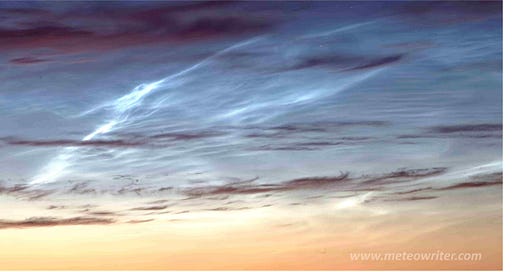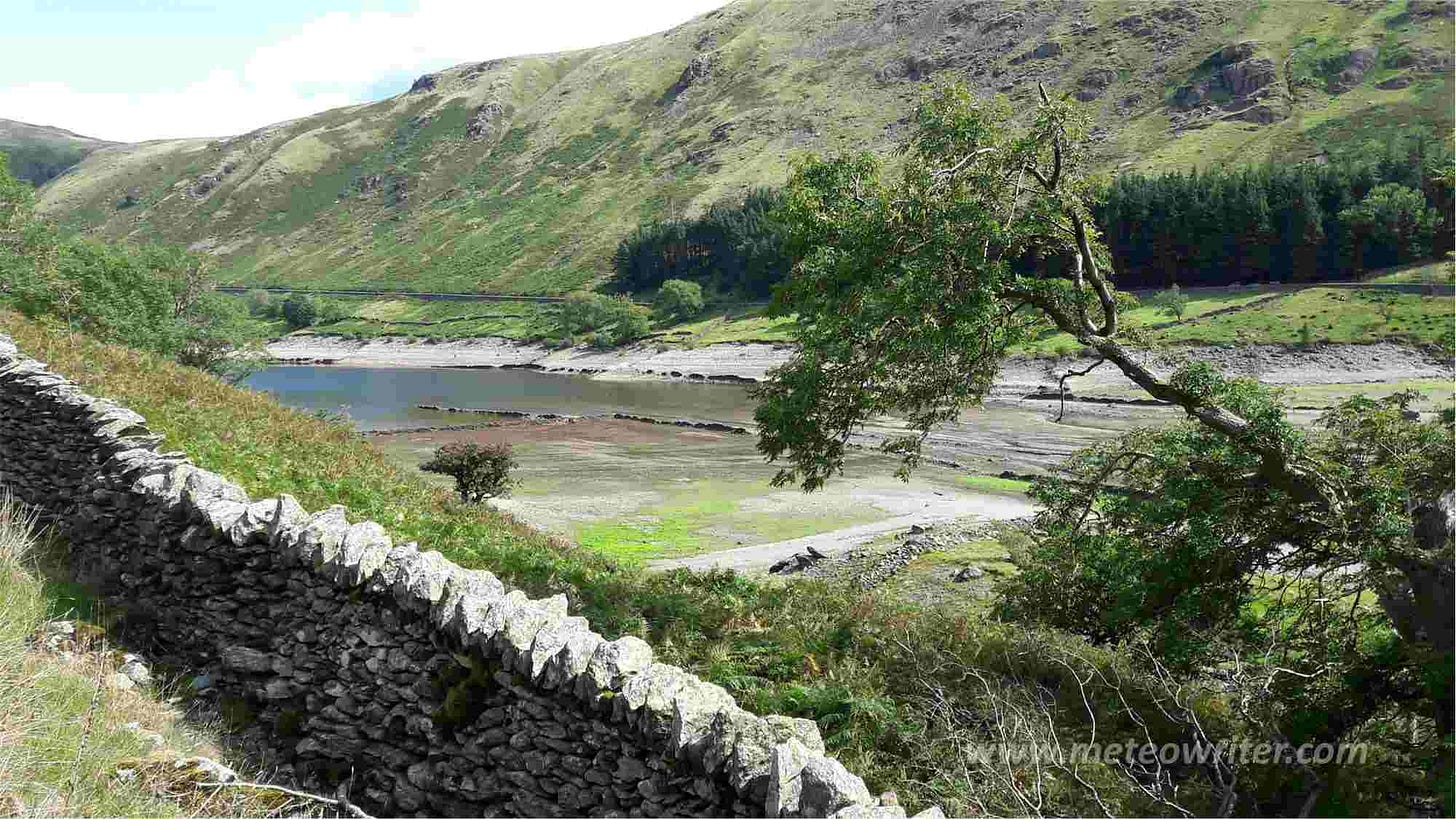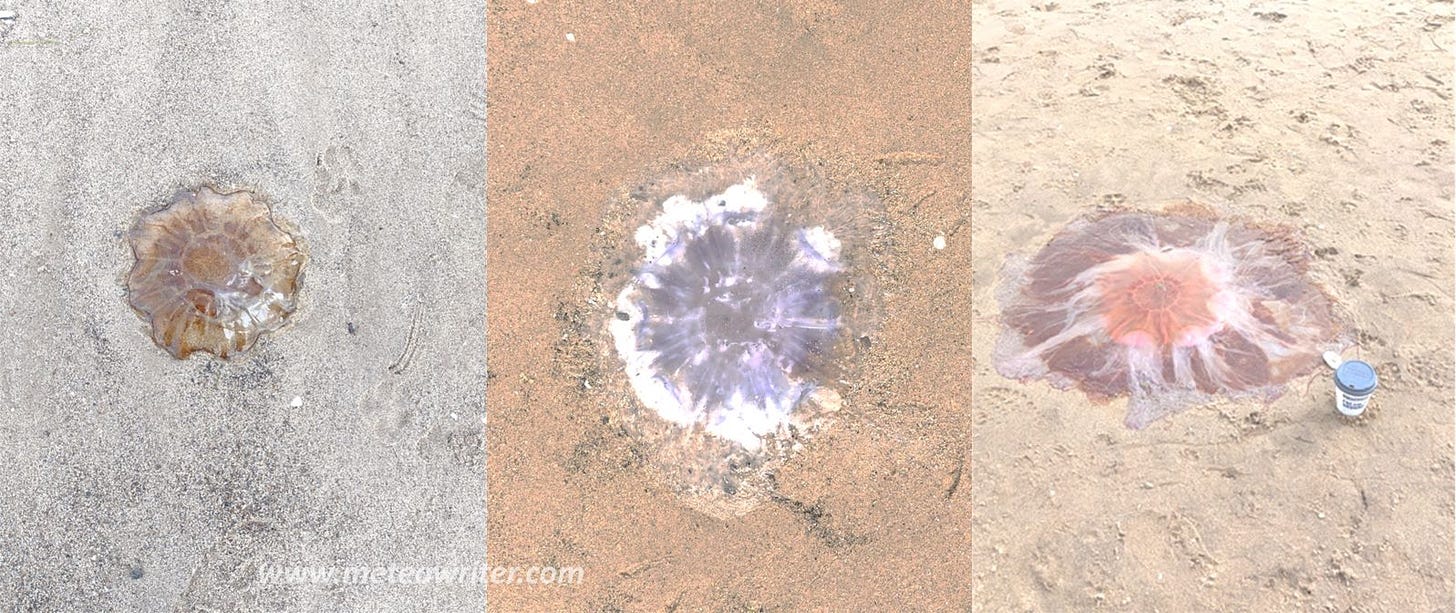Welcome to the June issue of Nature’s tidings, with news of some early summer sightings to look out for.
Based on the meteorological definition, summer began on 1 June although we’ll have to wait until the summer solstice (21 June) for the start of astronomical summer. For aurora hunters, this used to be the time to take a break due to the short nights but in recent years another remarkable phenomenon has become a popular target, namely that of noctilucent clouds.
In the best conditions, these form beautiful shimmering electric-blue, yellow and orange shapes in the night sky and are sometimes called night-shining clouds, based on the Latin derivations nocti- and lucent. In the past couple of days there have been sightings in northern Scotland, Canada and the USA.
Noctilucent clouds seen in Scottish skies a few years ago
Unlike most clouds, they form high above the layer where most of our weather occurs in a part of the atmosphere called the mesosphere, so they are also called polar mesospheric clouds. This is typically at heights of about 80 kilometres and they require nuclei to form, for which possible candidates at these levels include the debris from meteors, volcanic explosions and rocket launches.
Sightings are possible between late May and early August at latitudes between about 45 and 80 degrees, although are more likely the further north you are. For the best chances, you need to be out on a clear night – ideally with little moonlight - within an hour or two of sunset or sunrise and look in a generally northerly direction. To help with this, some of the aurora-focused apps and social media sites I mentioned in a previous post provide a good starting point, giving reports of recent sightings along with clues from webcam images and reflections from a European atmospheric research radar.
With the onset of summer, another less welcome development can be that of low reservoir levels, potentially leading to drought orders and water restrictions. Indeed, after an unusually dry spring much of northwest England was put into drought status on 21 May although the more recent showery weather is helping to raise levels again.
In some older reservoirs, one unusual consequence can be that sunken villages reappear, having first been submerged during the flurry of reservoir building that occurred in the 18th century and continued into the 1900s.
Perhaps the most famous example is the village of Mardale Green at the head of Haweswater Reservoir in the Lake District, which featured in several news reports last month as traditional drystone walls reappeared. If low flows persist, other examples may appear elsewhere, such as in the Peak District, Yorkshire Dales, Dartmoor or Wales (although check for recent reports before travelling in case levels have risen). International examples include villages that reappear in Italy and Greece.
A distant view of drystone walls and lanes at Mardale Green exposed during a summer drought
Summer sometimes brings another hazard in the forms of swarms of jellyfish and the following photo shows some examples of local strandings from the past few days of the blue jellyfish and the more alarming lion’s mane.
Small lion’s mane (left) and blue (centre) jellyfish seen last weekend along with a much larger lion’s mane from a few days ago (right; credit LM)
Both are common at mid latitudes and the lion’s mane is one of the largest species of all, whose tentacles have been observed to reach lengths approaching 40 metres. However, the Socttish Wildlife Trust website notes that 3 metres is more usual in British Waters with a bell up to 0.5 metres across, although the example above was about a metre across.
Due to their painful stings, wild swimmers will probably disagree but online videos show that they are truly beautiful when swimming, with an other-wordly pulsating motion and translucent red-brown colours. Like all jellyfish they have a remarkable life cycle progressing from larvae to polyps to the medusa (adult) phase, although they don’t go as far as the species Turritopsis dohrnii, which can revert to the polyp stage on dying in a process rare in nature called transdifferentiation.
So, while headlines sometimes talk of Atlantis reappearing when describing sunken villages, this process of immortality is perhaps even more remarkable.
Further reading
Spectacular Britain: A spotter’s guide to the UK’s most amazing natural phenomena, Bloomsbury, for scientific insights and more tips on spotting noctilucent clouds and sunken villages.








I've always liked the sort-of-paradox that the first day of Astronomical Summer is frequently referred to as Midsummer Day. And it's a big deal in many countries, notably around the Baltic—as I can testify having been to Midsummer celebrations in Helsinki.